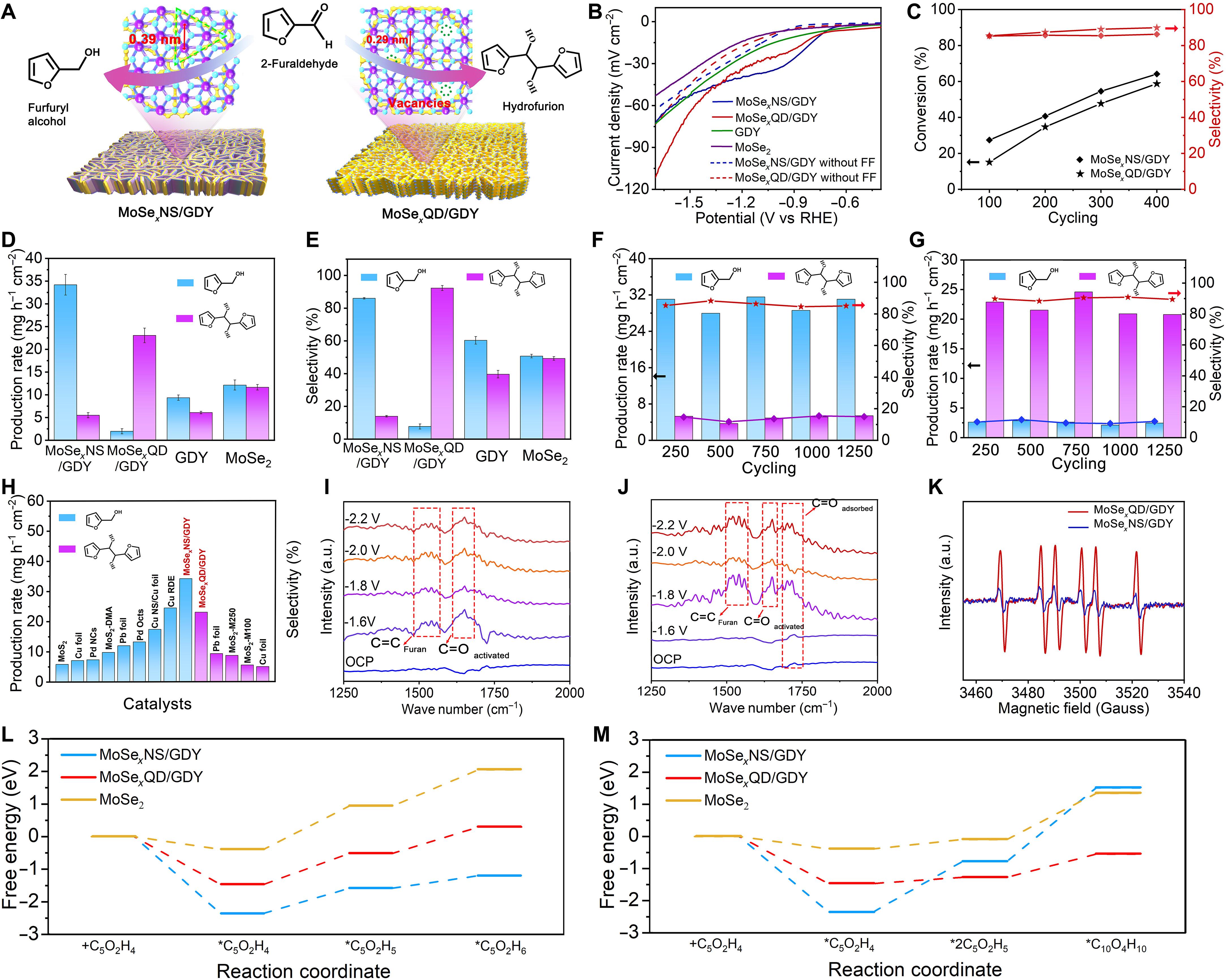Highly selective aldehyde coupling on the heterointerface of molybdenum selenide and graphdiyne
IF 12.5
1区 综合性期刊
Q1 MULTIDISCIPLINARY SCIENCES
引用次数: 0
Abstract
The highly negative reduction potential prevents the selective coupling of two aldehydes to construct C─C bonds and hinders the formation of ketyl radicals. However, this important comprehensive issue remains unsolved. Here, we report the efficient activation of aldehydes by the in situ growth of a molybdenum selenide-graphdiyne heterointerface structure, allowing an aldehyde molecule to be selectively coupled with another aldehyde at room temperature and ambient pressure. High-resolution transmission electron microscopy and scanning transmission electron microscopy (HAADF-STEM) images reveal the formation of high-density active sites at the interface structure. The synchrotron x-ray photoelectron spectroscopy, x-ray absorption spectroscopy, and electron paramagnetic resonance spectroscopy results confirmed the selective formation of ketyl radicals. The noninteger charge transfer between graphdiyne and metal atoms promotes the continuous selectivity and efficient activation of aldehydes and C─C coupling of ketyl radicals. The ultrahigh selectivity of 2-furaldehyde for hydrofurion reached 92 ± 2%, while the turnover frequency reached 57 ± 4 per second.

硒化钼与石墨炔异质界面上的高选择性醛偶联
高度负还原电位阻止了两个醛的选择性偶联以构建C─C键,并阻碍了基自由基的形成。然而,这一重要的综合问题仍未得到解决。在这里,我们报道了通过原位生长的硒化钼-石墨二炔异质界面结构对醛的有效活化,允许醛分子在室温和环境压力下选择性地与另一醛偶联。高分辨率透射电镜和扫描透射电镜(HAADF-STEM)图像显示在界面结构上形成高密度活性位点。同步加速器x射线光电子能谱、x射线吸收能谱和电子顺磁共振能谱结果证实了基自由基的选择性形成。石墨烯与金属原子间的非整数电荷转移促进了醛类的连续选择性和高效活化以及烷基自由基的C─C偶联。2-呋喃醛对加氢呋喃的超高选择性达到92±2%,周转频率达到57±4次/秒。
本文章由计算机程序翻译,如有差异,请以英文原文为准。
求助全文
约1分钟内获得全文
求助全文
来源期刊

Science Advances
综合性期刊-综合性期刊
CiteScore
21.40
自引率
1.50%
发文量
1937
审稿时长
29 weeks
期刊介绍:
Science Advances, an open-access journal by AAAS, publishes impactful research in diverse scientific areas. It aims for fair, fast, and expert peer review, providing freely accessible research to readers. Led by distinguished scientists, the journal supports AAAS's mission by extending Science magazine's capacity to identify and promote significant advances. Evolving digital publishing technologies play a crucial role in advancing AAAS's global mission for science communication and benefitting humankind.
 求助内容:
求助内容: 应助结果提醒方式:
应助结果提醒方式:


